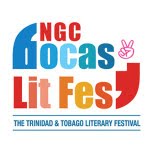In case you missed it--yes I can hear the snarky retort to this statement now in my head:
who would regret missing such an annual torture-fest?--here's a wrap up of what went down at the Big Stage at the Queen's Park Savannah from 6pm on Sunday to 2.30pm this morning (Monday):
LOTS OF QUEENS
Although the supposed Road March contender "Advantage" by Machel Montano advises one to stamp, trample and mash-up the stage, the Queens of the Bands didn't get the memo. Instead, one by one, the stage trampled them. The very first contestant (Jayle Marcano, with a presentation called 'D' Ruby Brooch ((you must remember that for Kings and Queens the definitive article is shortened to d to prove the costume is local, and then capitalised into a D and placed in 'D' for smug fit, annually))) got entangled in a TV camera crane. These costumes cost thousands and while I don't want to be insensitive, it was funny as hell. The crane kept on bobbing up and down and then toppled the backside of the bejeweled splendor of Ms Marcano.
Not funny was when the MacFarlane queen collapsed (it's official: all MacFarlane kings and queens are jinxed). The queen was on stilts and suddenly she had an awful, painful, anguished look on her face and then fell, her legs splaying in a gruesome split. It was an awful thing to watch people frantically run to her aid, not knowing if she was conscious or not.
BOZO THE CLOWN
This was by far the most entertaining King and it came from Curtis Eustace. It was my winner even if it was an homage to a past costume (the eventual winner was a big depiction of a tsunami by Wade Madray that was ripped apart by speakers on the stage because it was too big). The clown opened up to reveal two midgets, who then ripped pieces off the costume, triggering the release of balloons. C'mon, that was hot ppl!
THE KAISO WAS CRAP
For years, under the PNM, the country has had to endure that awful category of calypso called "The Social Commentary". For those of you who don't know it, this category is the heart-wrenching type that is best exemplified by Singing Sandra's dirge "Voices from the Ghetto". Ever since Sandra won with that song, we haven't heard the end of Social Commentary (with capitals), when calypsonians hammer us over the head with how terrible the world is.
But this year, the Social Commentary disappeared. Instead, suddenly, we had political picong left right and centre. All kinds of people who never even sang about politics in their careers before this year, became Political Commentators (with big capitals!)
But they were witless, had no satire, did not have a grasp of word-play, had awful stage presentations, had no sublty--in other words had none of the ingredients that make kaiso an art. (The exception though was Chalkdust's tired but competent songs and a few gems in between). It was awful and sounded a lot like calypsonians trying to be political for political sake. One even wore a PNM tie, another declared that he was waiting patiently for the Government to collapse. YES we all know calypso is a traditionally African/PNM field, but the great calypsonians had that skill of
appearing to be fair. Of if not fair, at least wickedly skillful and funny in their one-sided satire.
Instead, we had to endure a car coming onstage with a stalled engine representing The Government; an office scene in which a former PNM PM gave out goodies for which we should be grateful (such as the Hyatt Regency hotel!!!); some kind of Atillah-the-Hun's-pen-meets-King Arthur's sword scene; a bride and groom with a devilish masked seducer who takes the bride and then stabs her to death (which was the kaisonian's a metaphor for voting against the PNM, naturally); some kind of giant golden clasped hand that unfolded and collapsed and then let out Joseph wearing a techni-coloured coat. These people had no clue!
Brian London delivered the best calypso of the night with a first song called "We Fed Up" (so was the audience by the time he came on). This was the best critique of the Government, skillfully and artfully done through the prisim of a tribute to Shadow. Benjai had the best performance. (As a side note he was CHEATED by being given the last place. If the Dimanche Gras judges were thinking strategically they would have realised that this was probably his only opportunity to win something big since he was shut out of Groovy Soca Monarch and is unlikely to take Road March, even though he deserves it for "Trini". Such a strategic award would have raised the profile of the Dimanche Gras show and exposed it to a new audience). But just when you thought London had it in the bag, his second song was BORING. In fact, all the performers had this problem: one good song/performance and another boring one. Only Chalkdust pleased in both rounds.
Meanwhile what can you say about the deeply offensive lyrics that were featured this year? Cro Cro called black coalition Government supporters "black bottom lickers". That was such a subtle, artistic and sophisticated way to get his point across wasn't it? Kizzy Ruiz called corrupt people "them bitches". In a bizarre performance Tamika Darius called Louis Lee Sing "an old Lagahoo" and, of Jack Warner, said that his "PP not yet working." She wore a PNM tie, in case there was doubt about the slant of her songs. And Sugar Aloes also openly declared his resolve to wait for the coalition to collapse, because it is in the best interest of the country. Winner Karene Asche spoiled a competent calypso ("Uncle Jack") when she called Warner "the world's first black Hindu", which is possibly a racist remark in my view.

It was embarrassing for what should have been a banner year. Look at how much material the calypsonians had: they had elections, the PNM's bizzare last few months, the church at Guanapo, Pena, Hazel and that stupid talk about where she slept, Calder Hart etc etc. And they had this Government's grand piano fiasco, SIA/SSA. And what great calypso was produced? Not one comes to mind. Never has $2 million been more undeserved.
THE SHOW WAS NOT AS BORING AS IT USUALLY IS
It was still entertainingly corny! MC Richard Pierre was hoisted onto the stage in the middle of the proceedings with a crane amidst smoke and exploding pyrotechnics to the music of Star Wars for unclear reasons.
Then, there was a looooong dance 'sequence' about the history of the country which featured supposed "Amerindian" dancers with nobody of Amerindian descent. The "Ameridians" seemed to be dressed like Africans and to play African instruments. Anyhow, the "Europeans" and their contribution to this country was also represented accurately with dancers wearing petticoat-supported gowns that looked familiar (someone said the "presentation" was recycled from the Summit of the Americas).
Storms of confetti had to be swept off the stage every five minutes by about 50 CEPEP workers whom the organisers were lucky to book, it being the hectic Carnival season and all. There was a quietly lovely GLBT moment when Stinger (don't know who he is? Apparently, he's a chap called Dexter Parsons) said since it emerged that he was in the Dimanche Gras finals all sorts of snake in the grass people suddenly know him and love him (given the $2M top prize). He sang that he got "love letters...from women and men".
It all fell apart in the end though, when the programme was not respected after the Prime Minister and Gypsy arrived onstage. The great Shadow had to perform with both on stage--as well as a sea of media people--as nobody in charge was able to bring the PM onstage only at results time, leaving her to linger for a while. However, all in all the show was delightful for several reasons. And it's sometimes comforting to know that the more things change, the more they stay the same.












































